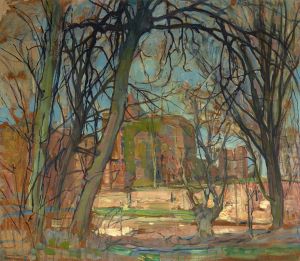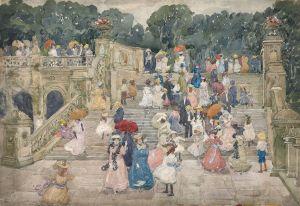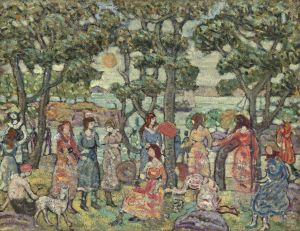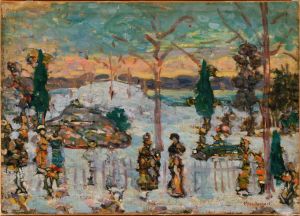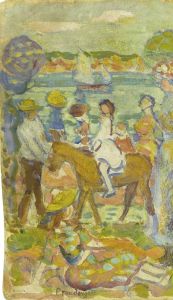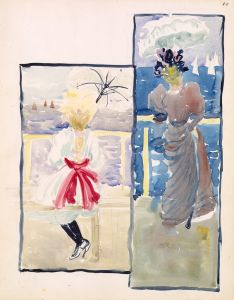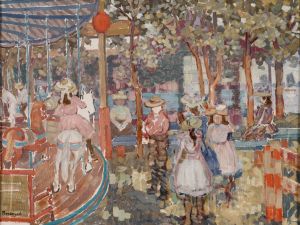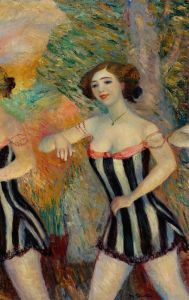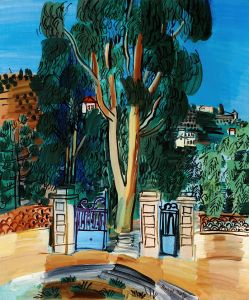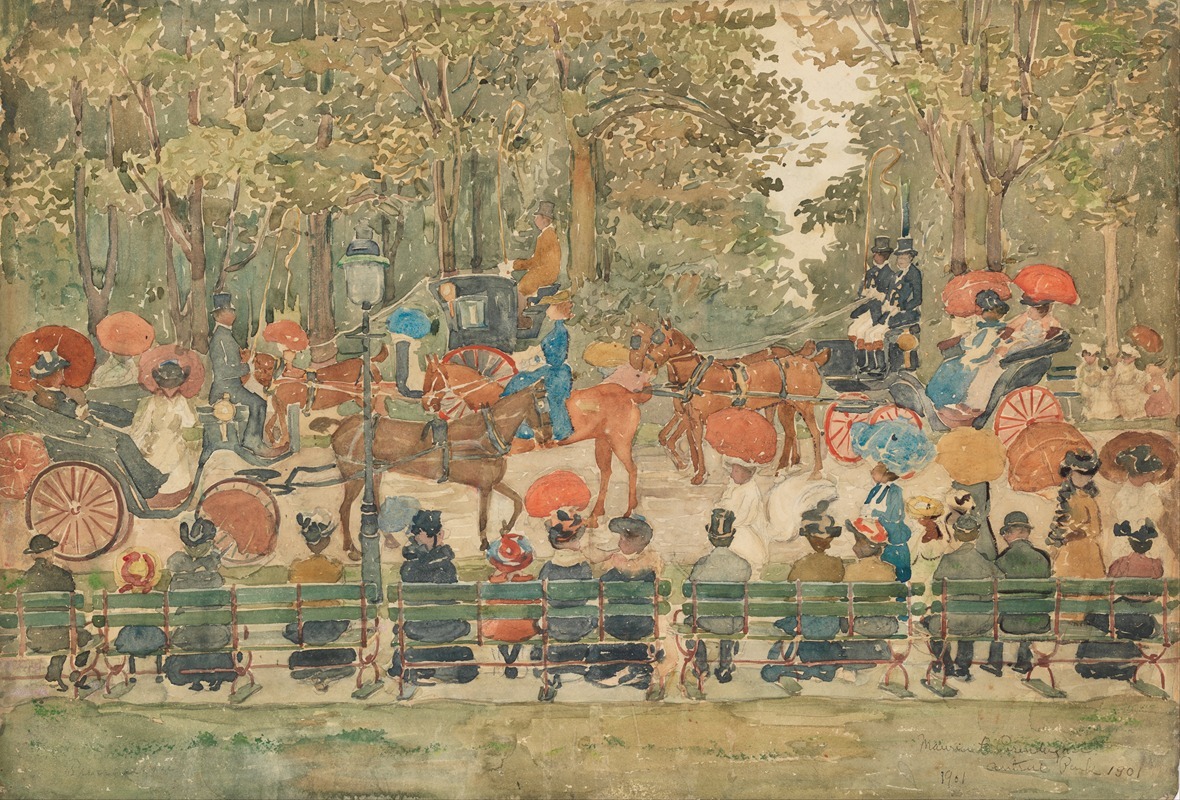
Central Park
A hand-painted replica of Maurice Prendergast’s masterpiece Central Park, meticulously crafted by professional artists to capture the true essence of the original. Each piece is created with museum-quality canvas and rare mineral pigments, carefully painted by experienced artists with delicate brushstrokes and rich, layered colors to perfectly recreate the texture of the original artwork. Unlike machine-printed reproductions, this hand-painted version brings the painting to life, infused with the artist’s emotions and skill in every stroke. Whether for personal collection or home decoration, it instantly elevates the artistic atmosphere of any space.
Maurice Prendergast's "Central Park" is a notable example of his work, reflecting his unique style and contribution to American art. Maurice Brazil Prendergast (1858-1924) was an American Post-Impressionist artist known for his vibrant, mosaic-like paintings and watercolors. He was a member of The Eight, a group of American artists who challenged the conservative art establishment of their time.
"Central Park" captures the essence of New York City's iconic park, a subject that Prendergast revisited multiple times throughout his career. The painting is characterized by its lively depiction of figures and the use of bright, bold colors. Prendergast's technique involved the application of paint in small, distinct patches, creating a tapestry-like effect that gives the work a sense of movement and energy.
The painting reflects Prendergast's fascination with leisure activities and public spaces, themes that were common in his work. Central Park, designed by Frederick Law Olmsted and Calvert Vaux, was a popular destination for New Yorkers seeking respite from the urban environment. Prendergast's depiction of the park captures the vibrancy and diversity of city life, with figures engaged in various activities such as strolling, sitting, and socializing.
Prendergast's style was influenced by his exposure to European art, particularly the works of the Post-Impressionists and the Nabis. His use of color and form shows the influence of artists like Paul Cézanne and Pierre Bonnard. Prendergast's time in Paris, where he studied at the Académie Julian, played a significant role in shaping his artistic vision.
"Central Park" is a testament to Prendergast's ability to blend European modernist techniques with distinctly American subjects. His work stands out for its decorative quality and the way it captures the fleeting moments of everyday life. The painting is part of a larger body of work that includes scenes of parks, beaches, and urban settings, all rendered with Prendergast's characteristic style.
Prendergast's contribution to American art lies in his ability to convey the dynamism and color of modern life. His work was well-received during his lifetime, and he exhibited with prominent art organizations, including the National Academy of Design and the Armory Show of 1913. The latter was a pivotal event in American art history, introducing the public to avant-garde European art and solidifying Prendergast's reputation as a leading modernist painter.
Today, "Central Park" and other works by Maurice Prendergast are held in major art institutions, including the Metropolitan Museum of Art and the Museum of Fine Arts, Boston. These collections ensure that Prendergast's vibrant depictions of early 20th-century American life continue to be appreciated by new generations of art enthusiasts.
In summary, Maurice Prendergast's "Central Park" is a significant work that exemplifies his unique approach to painting. Through his use of color, form, and composition, Prendergast captures the lively spirit of one of New York City's most beloved landmarks, offering a glimpse into the everyday experiences of its visitors. His work remains an important part of American art history, celebrated for its innovative style and enduring appeal.








